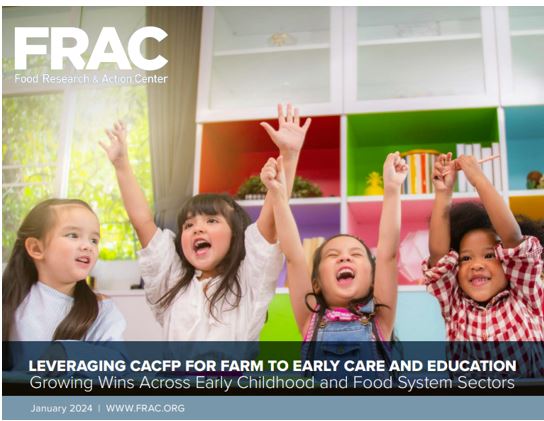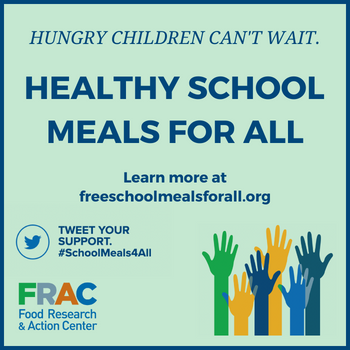CACFP pays for nutritious meals and snacks for eligible children who are enrolled at participating: child care centers and family child care homes, afterschool programs, homeless shelters, and senior day care centers. CACFP supports good nutrition and quality care in early care and education settings. Check out these 17 CACFP best practices from across the country.
Quick Facts
- In FY 2023, CACFP reached over 4.4 million participants on an average day.
- 339 million meals were served at day care centers, 1.5 billion were served at child care centers, and 69 million were served at adult day care settings.
- Benefits of CACFPIntervening in early childhood and providing high-quality child care programming is critically important in supporting the development of lifelong healthy behaviors. CACFP assures that children from low-income families in child care receive proper nutrition through ongoing training, technical assistance and support.
In addition, by paying for nutritious meals and snacks for eligible children enrolled at participating child care centers and family child care homes, CACFP plays an important role in improving the quality of child care programs and in making them more affordable for parents with low incomes.
- CACFP EligibilityTo be eligible for participation in CACFP, a sponsor must be a licensed or approved child care provider or a public or nonprofit private school which provides organized child care programs for school children during off-school hours. Any child up to age 12 or adult attending a participating adult day care facility is entitled to meals. Programs eligible for participation include non-residential child or adult care institutions, such as group or family child care, child or adult care centers, Head Start, recreation centers, settlement houses, and afterschool programs. For-profit child care centers serving 25 percent or more children from low-income families are also eligible.
- CACFP ReimbursementsParticipating programs are required to provide meals and snacks according to the nutrition standards set by USDA. The reimbursement rates vary based on the type of meal (lunches have a higher reimbursement rate than snacks), and the type of institution. Child and adult care centers and family child care homes have means-tested reimbursement systems that provide higher levels of reimbursement for low-income families: centers have a three-tiered and homes have a two-tiered reimbursement rate structure. At-risk afterschool programs and homeless, domestic violence and runaway shelters are assumed to be serving low-income children and are reimbursed at the highest rate.
- Reducing CACFP PaperworkState agencies, sponsors, advocates and other key stakeholders can use FRAC’s worksheet to evaluate current state policies, and identify opportunities for reducing paperwork requirements and barriers to participation.
- Child Care Centers and Family Child Care HomesYoung children attending participating family child homes, child care centers, or Head Start programs can receive up to two meals and a snack that meet USDA nutritional standards. The majority of CACFP participants are preschool-aged children. Eligibility is based either on the site’s area eligibility or on the enrolled child’s family income.
- Afterschool ProgramsSchool-based afterschool programs providing enrichment activities for children and teenagers after school can also provide free snacks through CACFP in areas where at least 50 percent of children are eligible for free or reduced-price meals. CACFP funds also can pay for suppers for children attending afterschool programs. Learn more here.
- Homeless Shelters and Senior Day Care CentersCACFP also provides up to three meals a day for children age 18 and younger living in homeless shelters and meals and snacks to senior citizens attending nonresidential day care centers.

New Report: Leveraging CACFP for Farm to Early Care and Education: Growing Wins Across Early Childhood and Food Systems Sectors
Read More
New Report : Enhancing Young Children’s Access to Local Foods and Farm to ECE: Federal Funding Opportunities
Read More
Child and Adult Care Food Program Participation Trends Brief
Read More
Improving Nutrition and Promoting Wellness in Child Care With CACFP
Read More
CACFP Enhanced Nutrition Standards Nutrition and Wellness State Agency Survey Results
Read More

